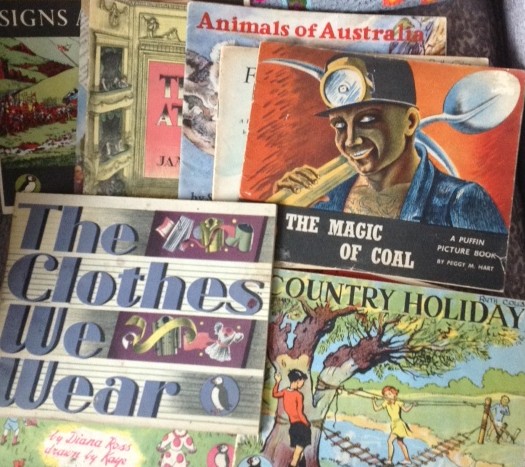Inspiring Young Readers
 posted on 18 Oct 2021
posted on 18 Oct 2021
Puffin Picture Books: a revolutionary idea in children’s publishing
I’ve recently had the good fortune to come across a number of original children’s books in the Puffin Picture Book series that were published between 1940 and 1965 – they are unusual to find like this because they rarely survive the ravages of time without staples rusting, pages becoming detached or covers getting scribbled on.
The story of Allen Lane and the Penguin Book revolution are well known but the publisher’s willingness to innovate also enabled other creative talents to bring their ideas to fruition. So it was with Noel Carrington and his idea for accessible, affordable and high quality information books for younger readers.
Carrington originally intended that the idea for these books should belong to the company he had been working for – Country Life – but they turned the opportunity down and so he turned to Allen Lane, who picked it up with enthusiasm.
In line with the ethos of the adult Penguin list, Carrington and Lane were clear that these books had to be high quality but not expensive – there were already other publishers trying to do a similar thing but their prices were comparatively high and were only likely to be purchased by affluent middle-class parents.
Given that the first four titles appeared in 1940, it’s not really much of a surprise that they focussed on wartime issues and were entitled, War On Land, War On Sea, War in the Air and On the Farm. The aspiration had been to produce a title a month but the paper shortages of wartime made that virtually impossible – although they did manage 13 over the first two years.
The quality of the illustration was also a key issue for Carrington and he was able to commission work from the likes of Charles Mozley, Kathleen Hale and Eric Ravilious amongst many other high profile illustrators. The printing of the Puffins was put in the hands of W.S. Cowell who pioneered a ground-breaking method of illustration production he called ‘Plastocowell’ – a form of autolithography that was used alongside photolithography which turned each book that was published into a direct piece of artwork.
Great care was taken to make sure the non-fiction titles were studiously researched as well as accessibly written and even lent themselves to translations of selected titles into a range of foreign languages.
The Puffin Picture Books imprint ran to 120 titles by the time the series was drawn to a close and, according to Phil Baines in his excellent Puffins By Design, they were popular with the target readers:
“The titles, accompanied by (generally) stunning illustrations by many leading artists of the day, captured children’s imaginations, were widely praised by the printing trade, and – very importantly – were for many years a commercial success.”
When Carrington retired in the 1960s, the series was drawn to a halt by the legendary Kaye Webb who had more extensive plans for Puffin Books that would see them move on to another level of reader recognition.
Looking at these fabulous books now, they very much look like they belong to another age. One of the things that makes them stand out is actually one of their commercial drawbacks – they are so hard to display on bookshop shelves. In small independent shops where space is at a premium these large letter-box shaped paperbacks are likely to be stacked one on another or slotted into display roundels and that limits their impact and appeal.
I would love to have a complete set but finding them at affordable prices in good condition makes the collecting of them a pretty slow process – but as with all of these collectables, part of the thrill is the hunt.
Terry Potter
October 2021